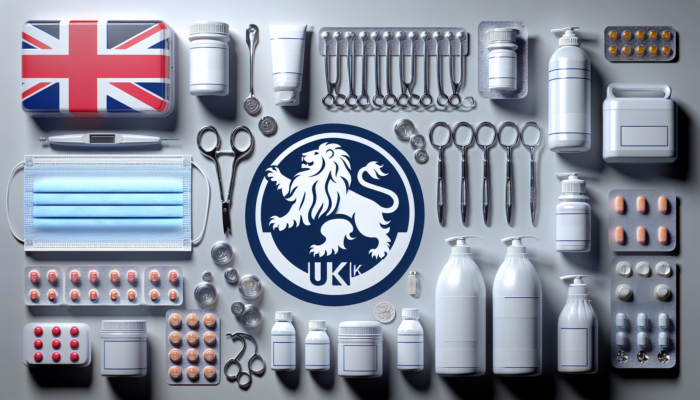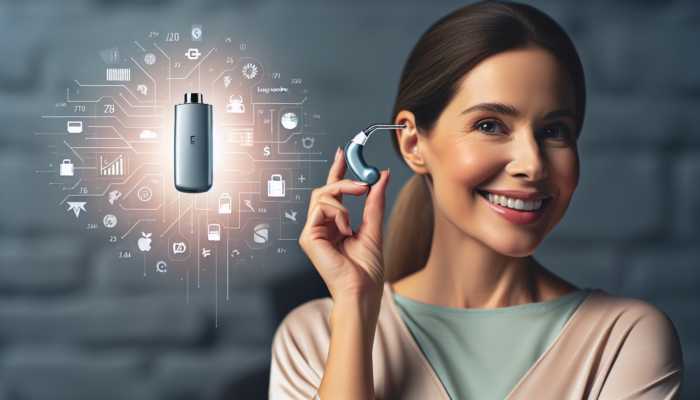Strategically Expanding Healthcare Partnerships: Essential Elements for Successful Collaborations
Expanding healthcare partnerships in a strategic manner is vital for organisations aiming to enhance their service offerings and improve operational efficiency. A well-structured partnership can lead to better patient outcomes, increased market presence, and bolstered financial performance. Nevertheless, the success of such collaborations relies on numerous foundational elements that must be meticulously considered.
Identifying the Right Partners: Essential Criteria and Key Considerations
When considering how to strategically expand healthcare partnerships, the initial step involves identifying potential collaborators that align seamlessly with your organisation’s mission and values. This alignment is crucial, as partners with shared objectives are more likely to engage collaboratively towards mutual success. Start by evaluating your organisation’s core values and determining those of potential partners.
Key factors to consider include organisational culture, service offerings, and patient demographics. For instance, if your organisation is focused on paediatric care, collaborating with a facility that specialises in adult health may not generate the desired synergy. Instead, seek out entities that enhance your services, such as schools, community health organisations, or specialised clinics.
Once potential partners are identified, assess their operational capabilities. Evaluate their technological infrastructure, staffing levels, and financial health. A strong partner with adequate resources can significantly enhance your service delivery, while a partner facing financial difficulties may introduce risks.
Lastly, consider the geographical reach of potential partners. Collaborations that span various regions can effectively address healthcare disparities and widen access to essential services. Ensure that the partner’s location complements your organisation’s service area and demographic focus.
Assessing Partner Compatibility: Effective Tools and Techniques
After potential partners have been identified, the subsequent step is to assess their compatibility using effective tools and techniques. Compatibility evaluations should focus on both qualitative and quantitative measures, ensuring that the partnership is established on a solid foundation.
Initiate the process with a SWOT analysis (Strengths, Weaknesses, Opportunities, Threats) for both organisations. This methodology provides insights into how each entity can contribute to the partnership and highlights potential challenges that may emerge. Additionally, consider using compatibility assessment tools to evaluate organisational culture, operational processes, and strategic objectives.
Conducting interviews with key stakeholders from both organisations can also yield valuable insights. Open discussions facilitate the exploration of shared goals and expectations. This dialogue can help clarify any potential misunderstandings and strengthen the foundation of the partnership.
Moreover, consider implementing pilot projects or trial periods prior to formalising the partnership. This approach allows both parties to evaluate the dynamics of the partnership and make necessary adjustments before committing to a long-term agreement.
Negotiating Partnership Agreements: Essential Elements to Include
Negotiating partnership agreements is a critical phase in the process of strategically expanding healthcare partnerships. A robust agreement not only delineates roles and responsibilities but also establishes clear expectations for both parties involved.
Begin by defining the scope of the partnership. Articulate the goals and objectives clearly, ensuring alignment with both organisations’ strategic vision. This clarity will guide decision-making and performance evaluation throughout the duration of the partnership.
Additionally, delineate the roles and responsibilities of each partner. Effective collaboration necessitates that all parties understand their contributions, whether in terms of resources, personnel, or expertise. Be precise in detailing expectations and deliverables to preclude confusion later on.
Financial arrangements should also be explicitly defined in the agreement. This encompasses the distribution of costs, revenue-sharing models, and funding responsibilities. Transparency in financial matters fosters trust and ensures that both partners are committed to the success of the initiative.
Ultimately, incorporate mechanisms for conflict resolution and performance evaluation. Establishing a framework for addressing disputes and measuring success will help maintain a positive partnership dynamic. Regular reviews and open communication channels are crucial for adapting to evolving circumstances and ensuring ongoing alignment with strategic goals.
Strategically Expanding Healthcare Partnerships: Insights through Market Analysis
A comprehensive understanding of the healthcare landscape is essential for organisations aiming to strategically expand their partnerships. Conducting a thorough market analysis provides the insights required to identify opportunities, evaluate competition, and make informed decisions.
Conducting Comprehensive Market Research: Understanding Healthcare Needs
To effectively expand healthcare partnerships strategically, organisations must engage in extensive market research. This process involves collecting data on current healthcare trends, patient needs, and emerging challenges within the sector.
Utilise a variety of research methods, including surveys, focus groups, and industry reports, to gather both qualitative and quantitative data. Understanding patient demographics, preferences, and satisfaction levels can inform partnership decisions and illuminate areas ripe for collaboration.
Moreover, remain alert to emerging healthcare trends, such as telehealth, integrated care models, and patient-centred care. These trends provide insights into shifting patient expectations and underscore the necessity for innovative partnerships that address evolving demands.
Involving stakeholder feedback is equally important. Engage with patients, healthcare providers, and community organisations to obtain diverse perspectives on healthcare needs. This feedback can guide the identification of suitable partners and the formulation of tailored partnership initiatives.
Analysing Competitor Partnerships: Drawing Lessons from Others
Studying competitor partnerships is a valuable strategy for organisations looking to expand their healthcare collaborations strategically. By analysing successful collaborations within the industry, organisations can identify best practices and glean insights into effective partnership models.
Commence by identifying key competitors and examining their partnership strategies. Look for patterns in the types of organisations they collaborate with, the services they provide, and the outcomes they achieve. This analysis can reveal opportunities for differentiation and highlight potential partners that align with your strategic objectives.
Consider conducting case studies of successful partnerships to understand the factors that contribute to their success. Identify common themes, such as shared values, clear communication, and mutual benefits. Learning from the experiences of others can help your organisation sidestep common pitfalls and refine its partnership approach.
Additionally, keep abreast of industry publications, webinars, and conferences to remain informed about emerging partnership trends. Networking with industry peers can also yield valuable insights into successful collaborations and potential partnership opportunities.
Identifying Market Gaps: Opportunities for Meaningful Collaboration
Identifying market gaps is a critical component of strategically expanding healthcare partnerships. By pinpointing underserved areas within the healthcare landscape, organisations can create impactful partnerships that address unmet needs.
Begin by conducting a thorough analysis of the healthcare market in your vicinity. Identify areas where patient needs are not being adequately addressed, such as specific health conditions, demographic groups, or geographic locations.
Utilise data analytics to discern trends and patterns in healthcare utilisation. This analysis can reveal opportunities for collaboration, such as partnering with organisations that offer complementary services or targeting underserved populations with customised initiatives.
Furthermore, engage with community stakeholders to gain insights into local healthcare challenges. This collaborative approach can uncover opportunities for partnerships that may not be immediately apparent through data analysis alone.
By strategically addressing market gaps, organisations can forge partnerships that enhance service delivery, improve patient outcomes, and foster organisational growth.
Strategically Expanding Healthcare Partnerships: Key Steps in Development
Developing successful partnerships in the healthcare sector necessitates a strategic approach. By adhering to key steps in partnership development, organisations can forge robust relationships that yield mutual benefits and success.
Building Relationships: Effective Networking and Outreach Strategies
Building relationships is foundational to strategically expanding healthcare partnerships. Effective networking and outreach strategies can assist organisations in connecting with potential partners and fostering collaboration.
Participating in industry events, conferences, and workshops presents valuable opportunities to engage with like-minded professionals and organisations. These gatherings facilitate relationship-building and allow for the exchange of ideas and experiences.
Engagement with professional associations and community organisations can further bolster networking efforts. Collaborating on initiatives, participating in joint projects, or hosting community events can help establish credibility and rapport with prospective partners.
Utilising social media platforms and online networking tools can further broaden your outreach. Engaging with industry influencers, sharing insights, and participating in relevant conversations can elevate your organisation’s profile and attract potential partners.
Moreover, consider establishing advisory boards or councils that comprise representatives from various sectors within healthcare. These groups can provide valuable insights, facilitate partnerships, and enhance collaboration across disciplines.
Proposing Partnerships: Crafting Persuasive and Compelling Proposals
Once relationships are established, the next step is to propose partnerships effectively. Crafting persuasive proposals is essential for attracting potential partners and securing their commitment.
Begin by clearly articulating the mutual benefits of the partnership for both parties. Highlight shared goals, complementary strengths, and potential outcomes that will emerge from collaboration. A well-defined value proposition can significantly elevate the appeal of the proposal.
Include specific details regarding the scope of the partnership, encompassing roles, responsibilities, and expected deliverables. Providing a clear framework for collaboration helps potential partners understand the implications of the partnership and sets the stage for successful implementation.
Additionally, consider incorporating case studies or examples of previous successful collaborations to reinforce your proposal. Demonstrating a track record of success can instil confidence in potential partners and showcase your organisation’s capabilities.
Finally, be prepared for negotiations. Flexibility and openness to feedback are essential as you work to refine the proposal based on the potential partner’s input. This collaborative approach not only strengthens the proposal but also fosters a sense of partnership from the outset.
Implementing Partnerships: Best Practices for Achieving Success
After securing a partnership agreement, effective implementation is critical for success. Adhering to best practices can ensure that the partnership is executed smoothly and that both parties achieve their desired outcomes.
Begin by establishing a clear implementation plan that delineates key milestones, timelines, and responsibilities. This plan should serve as a roadmap for both organisations, guiding collaborative efforts and ensuring accountability.
Regular communication is essential throughout the implementation process. Schedule consistent check-ins to discuss progress, address any challenges, and celebrate successes. Open lines of communication can help prevent misunderstandings and cultivate a culture of collaboration.
Furthermore, establish joint committees or working groups to oversee specific facets of the partnership. These groups can provide dedicated focus on critical areas, ensuring that both organisations are aligned and progressing towards common goals.
Lastly, be prepared to adjust strategies as necessary. Flexibility is crucial in responding to unexpected challenges or opportunities that may arise during the partnership. Regularly assess progress and remain open to making changes that enhance the partnership’s effectiveness.
Strategically Expanding Healthcare Partnerships: Navigating Legal and Regulatory Compliance
Navigating the legal and regulatory landscape is a crucial aspect of strategically expanding healthcare partnerships. Ensuring compliance with relevant laws and regulations protects both parties and enhances the partnership‘s credibility.
Understanding Healthcare Regulations: Navigating the Legal Landscape
A thorough understanding of healthcare regulations is paramount for organisations seeking to expand their partnerships. Familiarising yourself with relevant laws, regulations, and industry standards can help mitigate risks and ensure compliance.
Start by identifying the specific regulations applicable to your organisation and potential partners. This may encompass healthcare privacy laws, billing regulations, and licensure requirements. Understanding these regulations will shape the partnership structure and operational processes.
Consider consulting with legal experts who specialise in healthcare law. Their expertise can provide valuable insights into the regulatory landscape and help identify potential legal pitfalls. Additionally, legal counsel can assist in drafting partnership agreements that adhere to all relevant laws.
Staying informed about changes in healthcare regulations is equally important. Regularly review industry publications, attend conferences, and participate in training sessions to remain current on evolving legal requirements.
Finally, consider implementing compliance training for both organisations. Educating staff members on relevant regulations promotes a culture of compliance and ensures that all parties are aware of their responsibilities.
Ensuring Compliance: Proactive Steps to Maintain Legal Standards
Once the legal landscape is understood, organisations must take proactive steps to ensure ongoing compliance with legal standards. Establishing systems and processes that promote adherence to regulations is crucial for successful partnerships.
Start by developing a compliance framework that outlines policies and procedures for both organisations. This framework should include guidelines for data privacy, reporting requirements, and compliance monitoring.
Regular audits can help evaluate compliance with established policies. Conducting internal reviews can identify potential areas of concern and ensure that both organisations adhere to legal standards.
Additionally, consider utilising technology solutions that facilitate compliance management. Digital tools can streamline data tracking, reporting, and documentation, making it easier to maintain compliance.
Finally, foster a culture of accountability by promoting open communication around compliance issues. Creating a safe environment for discussing concerns can help address potential problems before they escalate.
Managing Risk: Effective Strategies for Mitigating Legal Challenges
Developing effective risk management strategies is crucial for mitigating legal challenges that may arise in healthcare partnerships. A proactive approach can help safeguard both organisations and ensure the partnership remains viable.
Begin by conducting a risk assessment to identify potential legal challenges associated with the partnership. This assessment should consider factors such as regulatory compliance, liability issues, and reputational risks.
Once risks are identified, develop strategies to mitigate them. This may include implementing robust data security measures, establishing clear lines of communication, and defining roles and responsibilities in the partnership agreement.
Additionally, consider formulating a crisis management plan to address potential legal challenges. This plan should delineate procedures for responding to legal disputes, regulatory inquiries, or compliance failures.
Regularly review and update risk management strategies to ensure they remain relevant and effective. Engaging in ongoing discussions with legal counsel and industry experts can provide valuable insights into emerging risks and mitigation strategies.
Strategically Expanding Healthcare Partnerships: Harnessing Technology for Enhanced Collaboration
In today’s digital era, leveraging technology is indispensable for strategically expanding healthcare partnerships. Effective utilisation of technology can enhance collaboration, streamline processes, and improve patient outcomes.
Implementing Digital Tools: Boosting Partnership Efficiency
Implementing digital tools is a vital step in enhancing efficiency within healthcare partnerships. These tools can facilitate communication, data sharing, and project management, resulting in improved collaboration and outcomes.
Start by assessing the specific needs of both organisations and identifying digital tools that align with those needs. Consider tools that enable secure communication, document sharing, and project tracking.
Collaboration platforms can enhance real-time communication between partners, reducing response times and improving decision-making. Project management tools can assist in tracking progress, assigning tasks, and ensuring accountability throughout the partnership.
Furthermore, consider employing data analytics tools to monitor performance metrics. These tools can provide valuable insights into partnership performance, enabling both organisations to make informed decisions and adjustments as required.
Lastly, ensure that all digital tools comply with relevant data security regulations. Protecting patient information and maintaining confidentiality is paramount in healthcare partnerships.
Telehealth Partnerships: Enhancing Access to Care
Telehealth partnerships present a unique opportunity for organisations to broaden their reach and improve service delivery. Collaborating on telehealth initiatives can significantly enhance access to care, particularly for underserved populations.
Begin by exploring potential partners with established telehealth capabilities or expertise. Collaborating with organisations that specialise in telemedicine can enrich your organisation’s service offerings and expand access to care.
Consider developing joint telehealth programmes that target specific healthcare needs within your community. This may encompass virtual consultations, remote monitoring, or educational initiatives aimed at promoting health literacy.
Additionally, leverage technology to streamline telehealth operations. Implementing user-friendly platforms and ensuring robust data security measures will enhance the patient experience and uphold trust.
Lastly, evaluate the effectiveness of telehealth initiatives through patient feedback and performance metrics. Regularly assess the impact of telehealth partnerships on patient outcomes and make adjustments as necessary.
Data Security: Safeguarding Patient Information in Partnerships
Protecting patient information is of utmost importance in healthcare partnerships, especially when utilising technology for collaboration. Implementing robust data security measures is essential for maintaining trust and ensuring compliance with regulations.
Start by establishing clear data security policies that delineate responsibilities for both organisations. This should include guidelines for data access, sharing, and storage.
Implement encryption and secure access protocols to safeguard sensitive information. Ensure that all digital tools utilised in the partnership adhere to industry standards for data security.
Regularly conduct security audits to identify potential vulnerabilities and ensure compliance with relevant regulations. Proactively addressing data security will help mitigate risks and protect patient information.
Furthermore, provide training for staff on best practices in data security. Educating employees about their responsibilities regarding data protection can foster a culture of security and compliance within both organisations.
Strategically Expanding Healthcare Partnerships: Evaluating and Measuring Success
Measuring and evaluating partnership success is vital for organisations looking to expand healthcare partnerships strategically. Establishing clear metrics and conducting regular assessments can ensure that partnerships remain aligned with strategic objectives.
Defining Clear Metrics: Establishing Success Criteria in Partnerships
Defining success in partnerships begins with establishing clear metrics that can be employed to measure performance. These metrics should align with the objectives of the partnership and provide a framework for evaluation.
Start by identifying key performance indicators (KPIs) that reflect the partnership‘s objectives. This may include metrics related to patient outcomes, operational efficiency, financial performance, or stakeholder satisfaction.
Ensure that these metrics are measurable and relevant. Establishing specific targets for each KPI can provide a benchmark for success and ensure that both organisations are working towards shared goals.
Additionally, consider incorporating qualitative measures to assess partnership success. Gathering feedback from stakeholders, including patients and staff, can offer valuable insights into the partnership‘s impact and effectiveness.
Finally, regularly review and update metrics as necessary. As the partnership evolves, it may be essential to adjust performance measures to reflect changing objectives or priorities.
Monitoring Progress: Regular Reviews and Constructive Feedback
Monitoring progress is crucial for ensuring that partnerships remain aligned with strategic objectives. Regular review and feedback processes can help identify areas for improvement while celebrating successes.
Consider establishing a schedule for periodic partnership reviews. These reviews should encompass discussions on performance metrics, challenges encountered, and successes achieved.
Encourage open communication during these reviews. Creating a safe space for feedback allows both organisations to address concerns, share insights, and collaboratively develop solutions.
Additionally, consider implementing a feedback loop that incorporates input from stakeholders. Gathering perspectives from patients, employees, and community partners can provide valuable insights into the partnership‘s impact and areas for enhancement.
Lastly, be prepared to adapt strategies based on feedback and performance data. Flexibility is essential to ensure that the partnership remains relevant and effective in achieving its objectives.
Adapting Strategies: Responding to Evolving Needs
As the healthcare landscape evolves, so too must partnership strategies. Being prepared to adjust strategies based on changing needs is critical for maintaining successful collaborations.
Regularly assess the external environment for emerging trends, challenges, and opportunities. Staying informed about industry developments can help identify areas where partnerships may need to adapt or evolve.
Engage in ongoing discussions with partners to ensure that both organisations remain aligned with current objectives. Regular communication fosters collaboration and ensures that all parties are aware of any shifts in priorities.
Be open to revisiting the partnership agreement as required. As circumstances change, it may be necessary to modify roles, responsibilities, or performance metrics to ensure ongoing alignment.
Lastly, celebrate successes and learn from challenges. Each partnership offers valuable lessons that can inform future strategies and enhance the effectiveness of collaborations.
Strategically Expanding Healthcare Partnerships: Case Studies and Real-World Insights
Examining case studies and real-world examples can provide valuable insights into effective partnership strategies. By analysing successful healthcare partnerships, organisations can identify key factors contributing to success and learn from past challenges.
Successful Healthcare Partnerships: Key Lessons Learned
Successful healthcare partnerships often exhibit common characteristics that enhance their effectiveness. By analysing these case studies, organisations can gain insights into best practices and strategies for success.
A notable example is the collaboration between hospitals and community health organisations to address social determinants of health. By working together, these partners have improved access to care and enhanced health outcomes in underserved populations.
Key lessons from successful partnerships include the importance of aligning goals, fostering open communication, and engaging stakeholders throughout the process. Additionally, these partnerships frequently prioritise data sharing and collaboration to enhance service delivery and improve patient outcomes.
Organisations should also contemplate the long-term sustainability of partnerships. Successful collaborations typically involve ongoing evaluation and adaptation to ensure their relevance and effectiveness in meeting community needs.
Challenges in Partnerships: Strategies for Overcoming Common Obstacles
While partnerships can yield significant benefits, they also present challenges that organisations must navigate. By learning from past challenges, organisations can develop strategies to overcome obstacles and enhance partnership effectiveness.
Common challenges in healthcare partnerships include misaligned goals, communication barriers, and differing organisational cultures. These obstacles can impede collaboration and hinder progress toward shared objectives.
To address these challenges, organisations should prioritise open communication and transparency from the outset. Establishing clear expectations and fostering a culture of collaboration can help mitigate misunderstandings and promote alignment.
Additionally, consider implementing conflict resolution mechanisms within the partnership agreement. Having a framework for addressing disputes can help prevent conflicts from escalating and ensure that both parties remain focused on their shared goals.
Lastly, be prepared to adapt to changing circumstances. Flexibility and a willingness to reassess strategies can help organisations navigate challenges and enhance the overall success of the partnership.
Future Trends: Anticipating Changes in Healthcare Collaboration
As the healthcare landscape continues to evolve, organisations must stay ahead of emerging trends to ensure that partnerships remain relevant. Anticipating changes in healthcare collaboration can strategically position organisations for success.
One notable trend is the increasing emphasis on value-based care. Partnerships that prioritise patient outcomes and cost-effectiveness will be better positioned to thrive in this evolving landscape.
Furthermore, the rise of digital health technologies and telehealth initiatives presents new opportunities for collaboration. Organisations that leverage technology to enhance service delivery and expand access to care will be well-equipped to meet the changing needs of patients.
Moreover, patient-centred care is becoming a focal point for healthcare organisations. Partnerships that prioritise patient engagement and satisfaction will be better positioned to succeed in an increasingly competitive environment.
By staying informed about future trends and adapting strategies accordingly, organisations can ensure that their partnerships remain viable and effective over time.
Strategically Expanding Healthcare Partnerships: Engaging Stakeholders and Cultivating Support
Engaging stakeholders and cultivating support is a critical aspect of strategically expanding healthcare partnerships. By fostering collaboration and ensuring buy-in from key stakeholders, organisations can enhance the success of their partnerships.
Effectively Communicating Partnership Benefits: Strategies for Securing Buy-In
Communicating the benefits of partnerships effectively is essential for gaining stakeholder support. Clear and compelling messaging can help stakeholders understand the value of collaboration and encourage their involvement.
Begin by articulating the shared goals and objectives of the partnership. Highlight how collaboration will enhance service delivery, improve patient outcomes, and address community needs.
Utilise various communication channels to reach stakeholders, including newsletters, social media, and community events. Engaging stakeholders through multiple platforms can help ensure that messaging is accessible and resonates with diverse audiences.
Additionally, consider hosting informational sessions or workshops to provide stakeholders with opportunities to learn more about the partnership. These events can facilitate dialogue, address concerns, and foster a sense of ownership among stakeholders.
Lastly, gather feedback from stakeholders to inform your communication strategies. Understanding their perspectives can help refine messaging and ensure that it aligns with their interests and priorities.
Involving Patients: Ensuring Patient-Centred Partnerships
Involving patients in partnership planning and execution is crucial for ensuring that collaborations remain patient-centred. Engaging patients can provide valuable insights and enhance the overall effectiveness of partnerships.
Consider conducting patient focus groups or surveys to gather feedback on their needs and preferences. Understanding patient perspectives can inform partnership strategies and ensure that initiatives align with their expectations.
Moreover, involve patients in decision-making processes where appropriate. Including patient representatives in advisory boards or committees can enhance collaboration and ensure that partnerships prioritise patient engagement.
Furthermore, consider developing patient education initiatives that promote awareness of partnership offerings. Empowering patients to understand and engage with available services can enhance their experience and improve health outcomes.
Lastly, continuously solicit feedback from patients throughout the partnership. Ongoing engagement can help identify areas for improvement and ensure that the partnership remains responsive to patient needs.
Fostering a Supportive Culture: Enhancing Collaboration
Creating a supportive culture that values and fosters collaboration is essential for strategically expanding healthcare partnerships. A culture of collaboration can enhance engagement and facilitate successful partnerships.
Start by promoting shared values and principles within both organisations. Emphasising the importance of collaboration, transparency, and mutual respect can help cultivate a culture that supports partnership development.
Encourage cross-organisational collaboration through team-building activities, joint training sessions, and collaborative projects. These initiatives can help build relationships and enhance understanding between organisations.
Additionally, recognise and celebrate successes within the partnership. Acknowledging achievements can foster a sense of pride and ownership among team members, reinforcing the value of collaboration.
Lastly, provide ongoing training and development opportunities that emphasise collaborative skills. Equipping staff with the tools and knowledge to collaborate effectively can enhance partnership success and improve outcomes.
Strategically Expanding Healthcare Partnerships: Long-Term Planning and Sustainability
Long-term planning and sustainability are critical components of strategically expanding healthcare partnerships. By developing a roadmap for partnership growth and ensuring ongoing viability, organisations can enhance their collaborative efforts.
Creating a Partnership Roadmap: Planning for Future Growth
Developing a partnership roadmap is essential for guiding long-term collaboration. This roadmap should outline key milestones, objectives, and strategies for achieving partnership goals.
Start by identifying the long-term vision for the partnership. Define the desired outcomes and the impact on both organisations and the communities they serve.
Next, establish a timeline for achieving key milestones. This timeline should include benchmarks for assessing progress and adjusting strategies as needed.
Moreover, consider incorporating flexibility into the roadmap. As the healthcare landscape evolves, it may be necessary to adapt strategies to remain relevant and effective.
Regularly review and update the partnership roadmap to reflect changing circumstances. Engaging stakeholders in this process can ensure that the roadmap remains aligned with their needs and expectations.
Securing Financial Resources: Strategies for Sustainable Partnerships
Securing funding is a vital aspect of ensuring the sustainability of healthcare partnerships. Developing financial strategies that support collaborative initiatives can enhance long-term success.
Explore various funding options, including grants, sponsorships, and private investments. Identifying potential funding sources early in the partnership development process can help secure necessary resources.
Consider developing joint funding proposals that highlight the collaborative nature of the partnership. Funders often prioritise initiatives that demonstrate shared goals and mutual benefits.
Additionally, establish a budget that outlines financial responsibilities for both organisations. Clear financial arrangements can promote transparency and ensure that both parties are invested in the partnership’s success.
Finally, regularly assess the financial health of the partnership. Monitoring financial performance can help identify potential challenges and inform decisions regarding resource allocation.
Ensuring Long-Term Sustainability: Strategies for Continued Success
Ensuring the sustainability of healthcare partnerships requires ongoing commitment and strategic planning. Implementing practices that promote long-term success is essential for maintaining effective collaborations.
Start by prioritising continuous evaluation and adaptation. Regularly assess partnership performance against established metrics and be prepared to make adjustments based on feedback and changing circumstances.
Foster a culture of collaboration and innovation within both organisations. Encouraging creative problem-solving and open dialogue can enhance partnership resilience and adaptability.
Additionally, consider establishing formal mechanisms for ongoing communication and feedback between partners. Regular check-ins and updates can help ensure that both organisations remain aligned and focused on shared goals.
Lastly, celebrate successes and recognise the contributions of all stakeholders. Acknowledging achievements can reinforce commitment to the partnership and encourage ongoing engagement.
Frequently Asked Questions (FAQs)
What are the primary benefits of expanding healthcare partnerships?
Expanding healthcare partnerships can enhance service delivery, improve patient outcomes, increase market share, and foster innovation through collaboration.
How can I identify potential healthcare partners?
Identify potential partners by assessing alignment in values, organisational culture, service offerings, and geographical reach.
What tools can assist in evaluating partner compatibility?
Tools such as SWOT analysis, compatibility assessments, and stakeholder interviews can help evaluate partner compatibility.
What elements should be included in a partnership agreement?
A partnership agreement should include the scope of the partnership, roles and responsibilities, financial arrangements, and mechanisms for conflict resolution.
In what ways can technology enhance healthcare partnerships?
Technology can enhance healthcare partnerships by improving communication, streamlining processes, and facilitating data sharing.
Which metrics should be used to measure partnership success?
Key performance indicators (KPIs) related to patient outcomes, operational efficiency, financial performance, and stakeholder satisfaction should be utilized to measure success.
How often should partnership performance be reviewed?
Partnership performance should be reviewed regularly, with established schedules for assessments to ensure alignment with goals.
What common challenges are faced in healthcare partnerships?
Common challenges include misaligned goals, communication barriers, and differing organisational cultures, which can hinder collaboration.
How can patient perspectives be integrated into partnership planning?
Patient perspectives can be included through focus groups, surveys, and involving patient representatives in decision-making processes.
What strategies can ensure the sustainability of healthcare partnerships?
Strategies for sustainability include continuous evaluation, fostering a culture of collaboration, securing funding, and maintaining open communication.

























